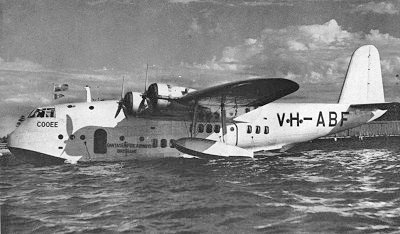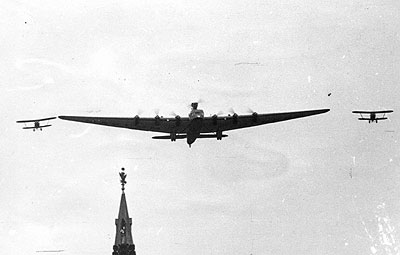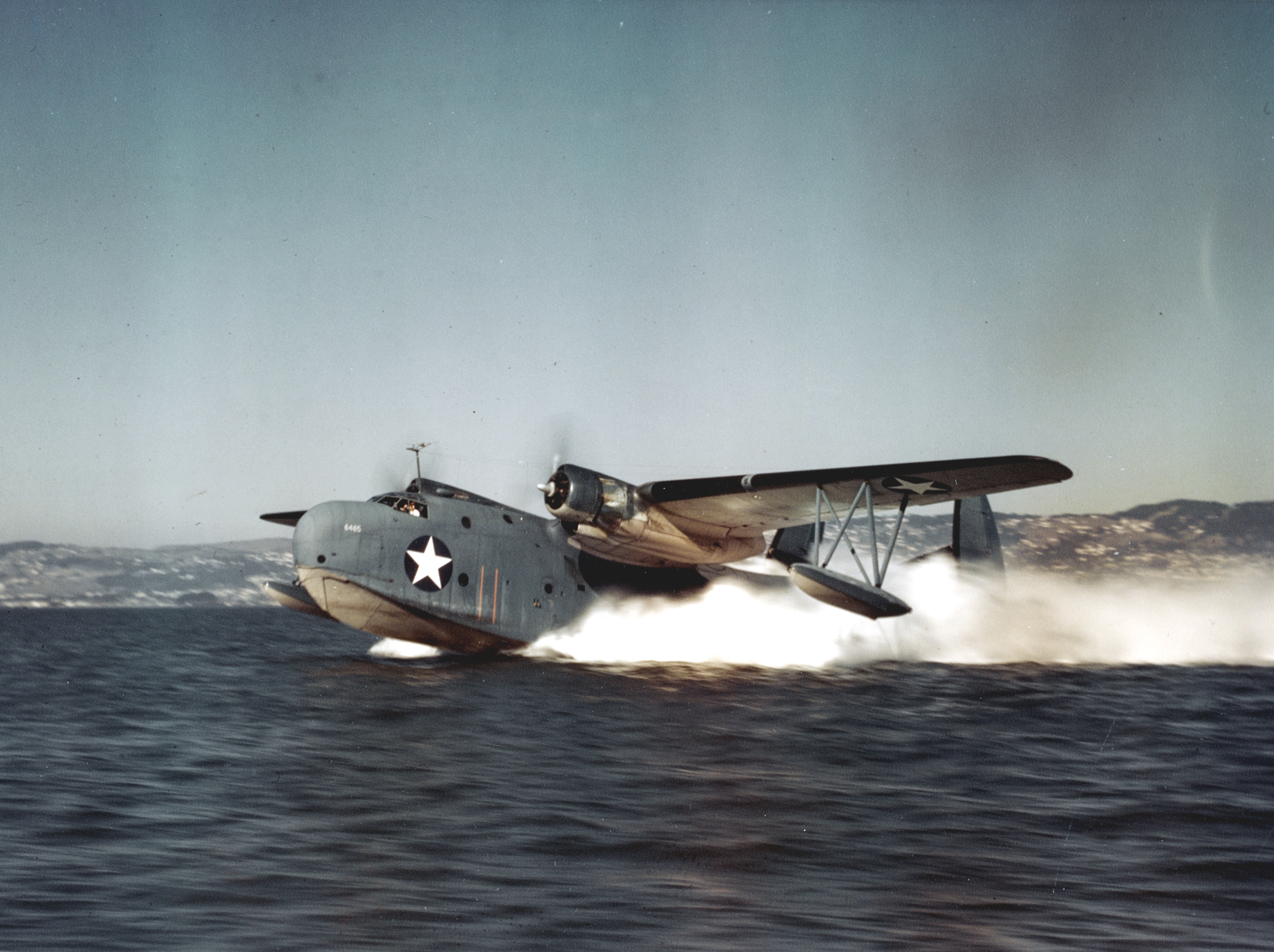|
Tupolev MDR-2
The ANT-8 was an experimental flying boat designed by Tupolev. It was designated the "MDR-2" (MDR meaning ''Morskoi Dalnii Razvedchik'', or Naval Long-Range Reconnaissance) by the military. Design and development Tupolev and the TsAGI were asked to build the ANT-8 in 1925, but other projects were deemed more important. Thus, little was completed on the ANT-8. Finally, in 1930, with Ivan Pogosski leading, actual work was started on the aircraft. Its first flight was on January 30, 1931, piloted by S. Riballschuk. Shortly after the ANT-8 flew for the first time, the ANT-14 lifted off the ground. Construction The ANT-8 was chosen to be made entirely from metal, with a Duralumin hull and similar wings to the Tupolev R-6. The fuselage received much attention from the designers and it was decided to have the floats included in the load-bearing structure. Power came from two pusher BMW VI engines mounted over the wings. The aircraft was fitted with an enclosed cockpit for the two pilots ... [...More Info...] [...Related Items...] OR: [Wikipedia] [Google] [Baidu] |
Tupolev
Tupolev ( rus, Туполев, , ˈtupəlʲɪf), officially United Aircraft Company Tupolev - Public Joint Stock Company, is a Russian aerospace and Arms industry, defence company headquartered in Basmanny District, Moscow. UAC Tupolev is successor to the Soviet Tupolev Design Bureau (OKB-156, Soviet Union military aircraft designation systems#Soviet system after December 9.2C 1940, design office prefix ''Tu'') founded in 1922 by aerospace pioneer and engineer Andrei Tupolev, who led the company for 50 years until his death in 1972. Tupolev designed over 100 models of civilian and military aircraft and produced more than 18,000 aircraft for Russia, the Soviet Union and the Eastern Bloc since its founding, and celebrated its 100th anniversary on 22 October 2022. Tupolev is involved in numerous aerospace and defence sectors including development, manufacturing, and overhaul for both civil and military aerospace products such as aircraft and weapons systems, and also missile and nava ... [...More Info...] [...Related Items...] OR: [Wikipedia] [Google] [Baidu] |
Degtyaryov Light Machine Gun
The Degtyaryov machine gun ( literally: "Degtyaryov's infantry machine gun") or DP-27/DP-28 is a light machine gun firing the 7.62×54mmR cartridge that was primarily used by the Soviet Union, with service trials starting in 1927, followed by general deployment in 1928. Besides being the standard Soviet infantry light machine gun (LMG) during World War II, with various modifications it was used in aircraft as a flexible defensive weapon, and it was equipped on almost all Soviet tanks in WWII as either a flexible bow machine gun or a co-axial machine gun controlled by the gunner. It was improved in 1943 producing the DPM, but it was replaced in 1946 with the RP-46 which improved on the basic DP design by converting it to use belt feed. The DP machine gun was supplemented in the 1950s by the more modern RPD machine gun and entirely replaced in Soviet service by the general purpose PK machine gun in the 1960s. Service use Despite its limitations, the DP had a reputation as a r ... [...More Info...] [...Related Items...] OR: [Wikipedia] [Google] [Baidu] |
Flying Boats
A flying boat is a type of seaplane with a hull (watercraft), hull, allowing it to land on water. It differs from a floatplane in having a fuselage that is purpose-designed for flotation, while floatplanes rely on fuselage-mounted floats for buoyancy. Though a flying boat’s fuselage provides buoyancy, it may also utilize under-wing Float (nautical), floats or wing-like hull projections (called sponsons) for additional stability. Ascending into common use during the First World War, flying boats rapidly grew in both scale and capability during the interwar period, during which time numerous operators found commercial success with the type. Flying boats were some of the largest aircraft of the first half of the 20th century, exceeded in size only by bombers developed during the Second World War. Their advantage lay in using water instead of expensive land-based runways, making them the basis for international airlines in the interwar period. They were also commonly used as mar ... [...More Info...] [...Related Items...] OR: [Wikipedia] [Google] [Baidu] |
1930s Soviet Patrol Aircraft
Year 193 ( CXCIII) was a common year starting on Monday of the Julian calendar. At the time, it was known as the Year of the Consulship of Sosius and Ericius (or, less frequently, year 946 ''Ab urbe condita''). The denomination 193 for this year has been used since the early medieval period, when the Anno Domini calendar era became the prevalent method in Europe for naming years. Events By place Roman Empire * January 1 – Year of the Five Emperors: The Roman Senate chooses Publius Helvius Pertinax, against his will, to succeed the late Commodus as Emperor. Pertinax is forced to reorganize the handling of finances, which were wrecked under Commodus, to reestablish discipline in the Roman army, and to suspend the food programs established by Trajan, provoking the ire of the Praetorian Guard. * March 28 – Pertinax is assassinated by members of the Praetorian Guard, who storm the imperial palace. The Empire is auctioned off; Marcus Didius Julianus the highest ... [...More Info...] [...Related Items...] OR: [Wikipedia] [Google] [Baidu] |
Tupolev Aircraft
Tupolev ( rus, Туполев, , ˈtupəlʲɪf), officially United Aircraft Company Tupolev - Public Joint Stock Company, is a Russian aerospace and Arms industry, defence company headquartered in Basmanny District, Moscow. UAC Tupolev is successor to the Soviet Tupolev Design Bureau (OKB-156, Soviet Union military aircraft designation systems#Soviet system after December 9.2C 1940, design office prefix ''Tu'') founded in 1922 by aerospace pioneer and engineer Andrei Tupolev, who led the company for 50 years until his death in 1972. Tupolev designed over 100 models of civilian and military aircraft and produced more than 18,000 aircraft for Russia, the Soviet Union and the Eastern Bloc since its founding, and celebrated its 100th anniversary on 22 October 2022. Tupolev is involved in numerous aerospace and defence sectors including development, manufacturing, and overhaul for both civil and military aerospace products such as aircraft and weapons systems, and also missile and nava ... [...More Info...] [...Related Items...] OR: [Wikipedia] [Google] [Baidu] |
Chetverikov MDR-3
The MDR-3 (a.k.a.11) was a long-range flying boat designed and built in the USSR from 1931. Development In 1931, Chyetverikov was commissioned to design a new long-range flying boat for MA (''Morskaya Aviatsiya'' – naval aviation). Chyetverikov used few new parts, borrowing wings, tailplane and engine nacelles (mounted above the wing) from the Grigorovich TB-5 and a scaled-up Grigorovich ROM-2 fuselage. The use of ready designed or built components led to quick construction of the prototype which was ready for flight tests in Dec 1931. These commenced in January 1932 after the aircraft was transported to Sevastopol in the Crimea. Despite fast construction and excellent structural qualities, results of the flight tests were disappointing. Takeoff time was 36 seconds, climb rate less than a metre per second and the ceiling was only 2,200m. As a result project was transferred to KOSOS (''Konstrooktorskiy Otdel Sektora Opytnovo Stroitel'stva'' – section of experimental aeropl ... [...More Info...] [...Related Items...] OR: [Wikipedia] [Google] [Baidu] |
Soviet Navy
The Soviet Navy was the naval warfare Military, uniform service branch of the Soviet Armed Forces. Often referred to as the Red Fleet, the Soviet Navy made up a large part of the Soviet Union's strategic planning in the event of a conflict with the opposing superpower, the United States, during the Cold War (1945–1991). The Soviet Navy played a large role during the Cold War, either confronting the North Atlantic Treaty Organization in western Europe or power projection to maintain its Warsaw Pact, sphere of influence in eastern Europe. The Soviet Navy was divided into four major fleets: the Soviet Northern Fleet, Northern, Pacific Fleet (Russia), Pacific, Black Sea Fleet, Black Sea, and Baltic Fleet, Baltic Fleets, in addition to the Leningrad Naval Base, which was commanded separately. It also had a smaller force, the Caspian Flotilla, which operated in the Caspian Sea and was followed by a larger fleet, the 5th Operational Squadron, 5th Squadron, in the Mediterranean Sea. The ... [...More Info...] [...Related Items...] OR: [Wikipedia] [Google] [Baidu] |
Engines
An engine or motor is a machine designed to convert one or more forms of energy into mechanical energy. Available energy sources include potential energy (e.g. energy of the Earth's gravitational field as exploited in hydroelectric power generation), heat energy (e.g. geothermal), chemical energy, electric potential and nuclear energy (from nuclear fission or nuclear fusion). Many of these processes generate heat as an intermediate energy form; thus heat engines have special importance. Some natural processes, such as atmospheric convection cells convert environmental heat into motion (e.g. in the form of rising air currents). Mechanical energy is of particular importance in transportation, but also plays a role in many industrial processes such as cutting, grinding, crushing, and mixing. Mechanical heat engines convert heat into work via various thermodynamic processes. The internal combustion engine is perhaps the most common example of a mechanical heat engine in which he ... [...More Info...] [...Related Items...] OR: [Wikipedia] [Google] [Baidu] |
Flying Boat
A flying boat is a type of seaplane with a hull, allowing it to land on water. It differs from a floatplane in having a fuselage that is purpose-designed for flotation, while floatplanes rely on fuselage-mounted floats for buoyancy. Though a flying boat’s fuselage provides buoyancy, it may also utilize under-wing floats or wing-like hull projections (called sponsons) for additional stability. Ascending into common use during the First World War, flying boats rapidly grew in both scale and capability during the interwar period, during which time numerous operators found commercial success with the type. Flying boats were some of the largest aircraft of the first half of the 20th century, exceeded in size only by bombers developed during the Second World War. Their advantage lay in using water instead of expensive land-based runways, making them the basis for international airlines in the interwar period. They were also commonly used as maritime patrol aircraft and air-s ... [...More Info...] [...Related Items...] OR: [Wikipedia] [Google] [Baidu] |
BMW VI
The BMW VI was a water-cooled V-12 aircraft engine built in Germany in the 1920s. It was one of the most important German aero engines in the years leading up to World War II, with thousands built. It was further developed as the BMW VII and BMW IX, although these saw considerably less use. It was also produced in the Soviet Union as the M-17 and Japan as the Kawasaki Ha-9. Design and development The BMW VI was the first twelve-cylinder engine built by the BMW. It essentially consisted of two cylinder banks from the six-cylinder BMW IV bolted to a common cast aluminium crankcase at a 60-degree included angle between the cylinder banks. Series production commenced in 1926 after type approval had been granted. From 1930 on, after 1000 engines of the BMW VI type had already been delivered, Germany was again permitted to construct military aircraft. The sudden additional demand resulted in the production figures increasing rapidly. In 1933 the BMW VI was used for BMW's first exp ... [...More Info...] [...Related Items...] OR: [Wikipedia] [Google] [Baidu] |








